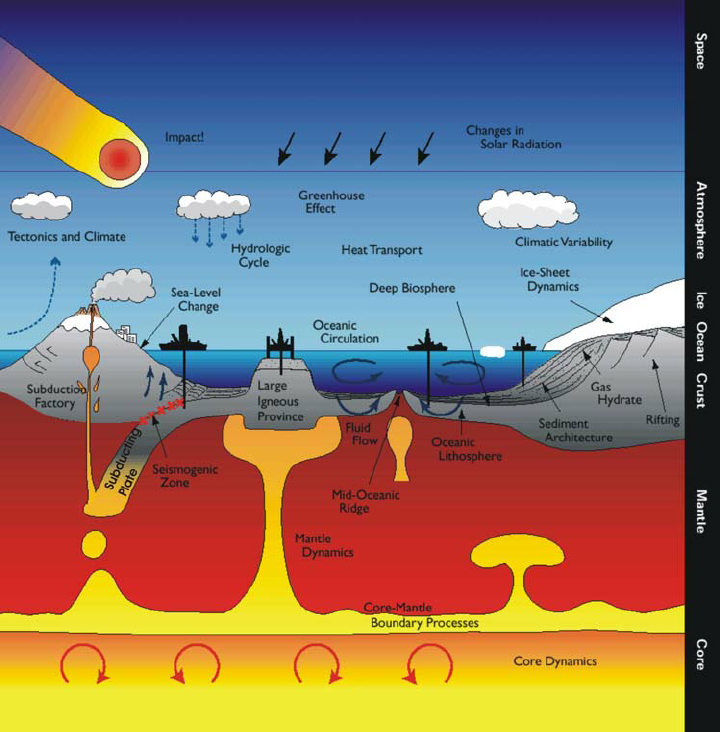Marine geology
and paleoceanography
ISMAR has established experience and expertise in Marine Geology and Paleoceanography. The Institute takes a multidisciplinary and integrated approach to the study of Earth system sciences and environmental technologies.
Research activities in the fields of Marine Geology and Paleoceanography are based on an articulated framework of knowledge and expertise based on the use of new technologies for geophysical data acquisition, large instrumentation and naval infrastructure, which today with the acquisition of the new oceanographic ship “Gaia Blu” by the CNR, sees a new perspective of development.
ISMAR carries out research at regional level on the tectonic setting and geodynamics of sectors of the orogenic system of the Mediterranean area (Alps, Apennines, Sicily, Magherbids, Dinarids, Hellenids), of the Neogeneic back-arc basins (e.g. Tyrrhenian Sea, Pannonian Basin), of the active front of the Apennine chain (Ionian Sea, Sicilian Channel), in areas of continental rift and recent oceanization (e.g., Red Sea), and in mature oceanic areas characterized by large-displacement transform systems.
Systematic collection of data on the Italian seas provide support to the field of seafloor mapping (e.g., Geological Maps of the Italian Seas at scales 1:250,000 and 1:50,000). The acquisition of morphobathymetric surveys and sidescan sonar and backscatter acoustic data, calibrated by bottom sediment sampling and ROV inspections enables the mapping of marine habitats, useful for sustainable management and use activities of the marine environment and coastal areas and for the assessment of the extent of anthropogenic impacts on the seabed.
In collaboration with other CNR and other research groups, ISMAR is active on the following topics: (a) analysis of the stratigraphic architecture and evolution of coastal depositional systems and elements, and in a broader sense, of the Quaternary continental shelf-shelf system, with a focus on the late Holocene; (b) active tectonics, in order to assess the seismogenetic (and tsunamigenic) potential of selected marine areas surrounding the Italian coastal zone; (c) recent and current coastal morphological (erosional and depositional) processes; main catastrophic events (floods, storms) that have affected the coasts in historical times; evolutionary trends of the coastal system related to late Quaternary eustatic oscillations; d) deep and shallow submarine gravitational instabilities; e) seismogenic structures (active faults); submerged volcanic buildings and centers; f) sandy deposits and mineral deposits of mining interest; g) exploration of submerged archaeological areas.
The activities related to the recent Quaternary paleoclimatology and paleoceanography based on an integrated study of multiproxies obtainable from the sedimentary record (microfossils; isotopic geochemistry, physical and petrographic parameters) and for which a wide range of state-of-the-art instrumentation and laboratories are available, aim to understand the natural variability of the Earth system and to assess the impact of climate change on the quality and functioning of environmental systems.
